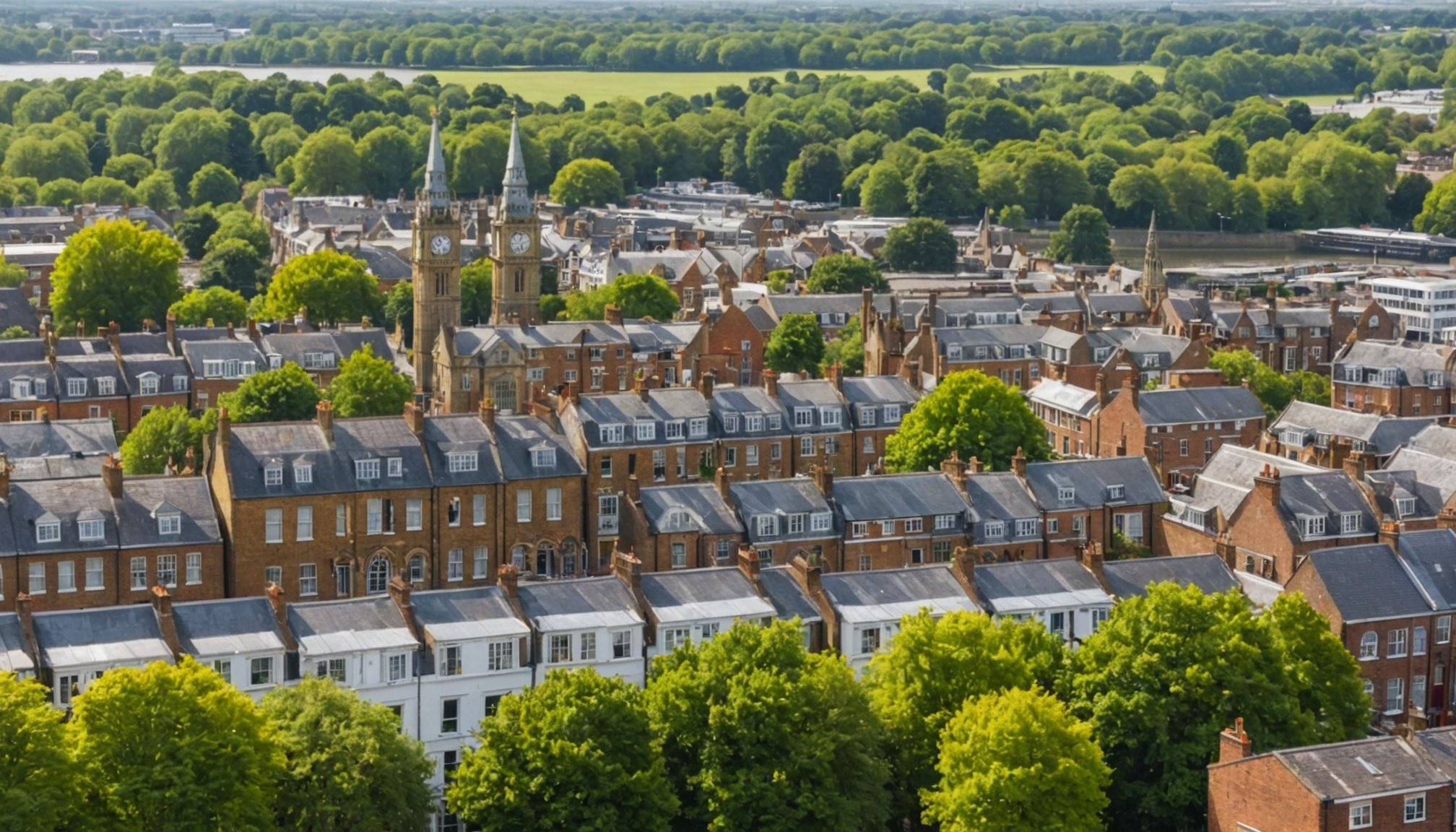London stands as one of the world’s most dynamic property markets, attracting both local and international investors. With its rich history, diverse culture, and robust economy, the capital offers numerous opportunities for investment in residential and commercial properties. However, identifying the right areas for growth can be challenging. As potential investors, understanding the nuances of the London property market is crucial. This article will provide you with insights and strategies to pinpoint the best neighborhoods for investment, ensuring you make informed decisions that maximize your yields and potential returns.
Current Trends in London’s Property Market
To effectively navigate the London property landscape, you must first familiarize yourselves with the current market trends. Over the past few years, London has experienced fluctuations in property prices influenced by factors such as economic conditions, government policies, and shifting demographics. The average property price in London has seen variations, with some areas experiencing significant growth while others remain stagnant or decline in value.
Also read : What are the advantages of investing in commercial property versus residential property in the UK?
Understanding these trends is essential for investors looking to capitalize on the market. For instance, areas undergoing regeneration or those close to new transport links often exhibit higher demand and subsequently increase in value. Moreover, the aftermath of the COVID-19 pandemic has led to changes in demand for different types of properties; many people now seek homes with more space, either in suburban areas or locations that offer a balance between city living and access to green spaces.
As you analyze potential investments, pay attention to local council plans, infrastructure developments, and community initiatives that may signal upcoming growth. Furthermore, consider the rental market dynamics; neighborhoods with rising rental yields indicate robust demand from tenants, offering a stable income stream for investors. Keeping abreast of these trends enables you to make strategic decisions in choosing the right areas for your property portfolio.
Also to see : What are the current challenges facing the UK rental market and how can landlords adapt?
Identifying Areas with High Growth Potential
When searching for the best neighborhoods for investment, identifying areas with high growth potential becomes paramount. Key indicators of growth include infrastructure developments, economic opportunities, and demographic shifts. Investors should research neighborhoods that show signs of gentrification, where old properties are being refurbished, and new businesses are setting up. These transformations often lead to increased property values and higher rental yields.
Another critical factor is the availability of amenities. Areas with good schools, parks, shopping facilities, and public transport links typically attract families and young professionals. As these demographics move into the neighborhood, demand for rental properties and homes for sale increases, driving up prices. You can benefit from local government initiatives focusing on urban renewal, which often lead to revitalized areas experiencing significant economic growth.
In addition to physical infrastructure, consider the social infrastructure, including community centers, healthcare facilities, and cultural institutions. Such amenities enhance the quality of life and make areas more appealing to potential tenants or buyers. A neighborhood’s crime rate and safety also play a crucial role in its attractiveness—investors should look for areas where crime rates are declining or have remained stable.
Lastly, keeping an eye on emerging trends in lifestyle preferences is vital. With the rise of remote work, some investors are looking into suburban or semi-urban areas that offer more space and affordability while still providing access to the city. These properties can yield significant returns as more individuals seek a balance between work and life.
Understanding Rental Yields and Demand
For investors looking to rent out properties, understanding rental yields and tenant demand is essential. Rental yield is the annual rental income expressed as a percentage of the property’s purchase price. Higher yields typically indicate strong demand, making these properties attractive for investment. In London, rental yields can vary significantly between different areas.
To maximize your investment, focus on neighborhoods known for their higher yields, often found in outer boroughs where property prices are more affordable compared to central London. Areas such as Barking and Dagenham, Croydon, and Greenwich have become popular among investors due to their potential for good rental incomes and capital appreciation.
Furthermore, understanding the tenant demographic in these neighborhoods is vital. For instance, young professionals may prioritize proximity to transport links and vibrant nightlife, while families may look for reputable schools and parks. This demographic analysis can guide your investment decisions, ensuring that you align your properties with the needs and preferences of prospective tenants.
Monitoring trends in the rental market is equally crucial. An increase in rental prices in certain areas may indicate growing demand, making it a ripe opportunity for investment. Additionally, staying informed about local legislation affecting the rental market, such as rent controls and tenant rights, can help you navigate potential risks associated with your investments.
The Role of Property Prices in Investment Decisions
Property prices are one of the most critical factors influencing investment decisions in London. Understanding the average price trends in various areas can help you identify potential bargains or overly inflated properties. It is essential to analyze historical data to get a sense of how prices have fluctuated over time, considering any external influences such as economic downturns or policy changes.
Investors should also consider the ratio of property prices to rental income. In areas where property prices are rising but rental incomes are stagnant, the market may be cooling off, indicating a potential risk for investors. Conversely, areas where property prices are reasonable but rental yields are high suggest a favorable investment climate.
You may also want to explore neighborhoods that have recently undergone price corrections. Often these areas present unique opportunities to purchase properties at a lower cost before the market rebounds. Engaging with local real estate agents and market analysts can provide valuable insights into emerging areas and price predictions.
Lastly, keep an eye on broader economic indicators, such as interest rates and employment rates. Economic stability typically correlates with a healthy property market. If the economy is performing well, the demand for both rental and purchase properties tends to increase, leading to higher prices and better yields for investors.
Investing in London’s property market can be a rewarding venture, provided you make informed decisions. By understanding the current trends, identifying areas with high growth potential, analyzing rental yields and demand, and keeping a close watch on property prices, you can position yourselves to make profitable investments.
The city is vast, and each neighborhood offers unique opportunities and challenges. Therefore, thorough research and market analysis are essential to ensure your investments align with your financial goals. Remember to remain adaptable and open to emerging trends, as the property market is always evolving. With the right strategy and knowledge, you can successfully navigate the complexities of London’s property market and secure valuable assets for the future.











